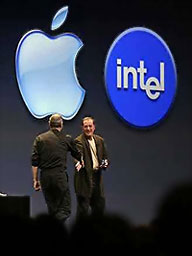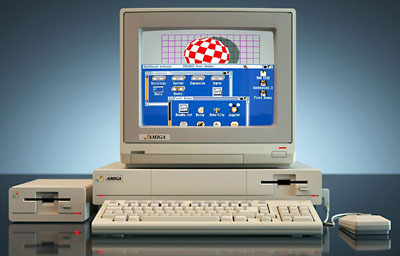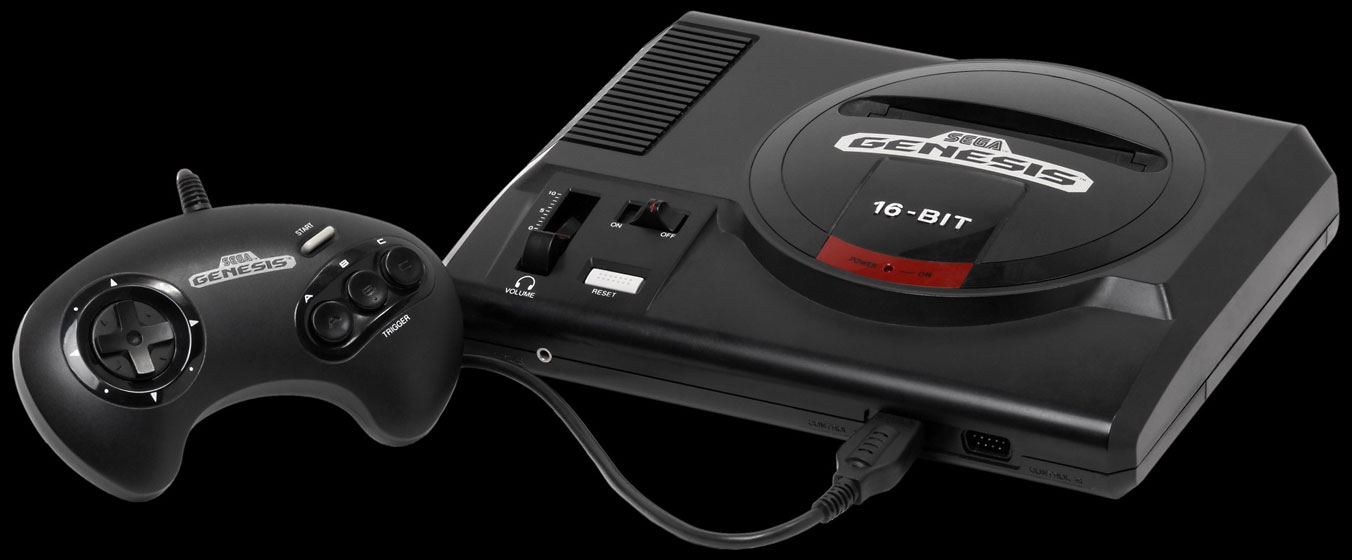2006 – It’s hard to believe that’s its been over a year since Steve Jobs dropped the Intel bombshell at WWDC 2005. The announcement sent shock waves throughout the industry, and as soon as Steve Jobs walked off the stage, speculation was rife as to how the Mac line would be altered.
 Amazingly, in just 12 months there is no longer a single PowerPC-based Mac in production, with the product line consisting solely of Intel models.
Amazingly, in just 12 months there is no longer a single PowerPC-based Mac in production, with the product line consisting solely of Intel models.
A ‘Common’ CPU
Personally, it came as a big shock to me when I heard the news, and I couldn’t help but feel a little stupid at the way Steve Jobs had made all of my own claims of PowerPC superiority untrue.
The thing that got to me the most was the fact that Apple had chosen a “common” processor, one that up until recently was only worthy of residing in the thousands of faceless PC clones that reside in the majority of PC owning households and offices. The Intel chip would almost devalue the Mac – and maybe even cause it to seem like just another PC clone with a big “Intel Inside” sticker slapped on the side.
Motorola 680×0
But the truth is, in the very beginning of the Mac’s life in 1984, it used a chip that could be almost be described as the “old chestnut” of the computer industry – the Motorola 68000. This family of chips found its way into numerous devices in the 80s and early 90s, and more often than not, they were used more effectively than in the Mac line.
The two most memorable examples were the Sega Mega Drive and the venerable Amiga.
Amiga
 The case of more efficient use was particularly true in the Amiga example, which had specs that blew away practically everything else on the market in 1985. It sported graphics in 4096 colours, a true multitasking operating system (some would argue that Macs and PCs still can’t multitask), a superb sound chip with FM synthesis, and all manner of inputs and outputs including TV compatibility – all built around the same 8 MHz CPU found in the first Macs.
The case of more efficient use was particularly true in the Amiga example, which had specs that blew away practically everything else on the market in 1985. It sported graphics in 4096 colours, a true multitasking operating system (some would argue that Macs and PCs still can’t multitask), a superb sound chip with FM synthesis, and all manner of inputs and outputs including TV compatibility – all built around the same 8 MHz CPU found in the first Macs.
Compare that to the similarly placed Mac from the same year (Apple hadn’t even released the Mac Plus yet!), and you’ll see that there really was no comparison.
Unfortunately, the powers that be at Commodore rested on their laurels for way to long, slowly falling behind the Mac and the emerging Wintel market before fading to the hobbyist oblivion in which it currently rests.
The Amiga’s great rival, the Atari ST (also released in 1985), used the same 68000 CPU, and the company that gave video game consoles to the world suffered an equally dramatic and slowly painful fall from grace.
Sega
The Sega Mega Drive (Genesis, for American readers) was a completely different kettle of fish. Again sporting the proven Motorola 68000, the Mega Drive was Sega’s finest hour in the blossoming video game industry of the early 90s.

Released at a time when the 8-bit NES was totally dominant, Sega shook the industry with its 16-bit technology and gave Nintendo a huge wake up call, briefly relegating them to second place in the console race in 1993.
Like Commodore’s Amiga, Sega plotted its own downfall, and numerous horrendous hardware releases conspired to force the company out of the hardware business after what I believe to be its finest hour, the Dreamcast.
Yes, the 68000 CPU has certainly been around and has lots of stories to tell – and it could be seen to be the kiss of death for companies. Even Apple were teetering on the brink of joining the obituary.
PowerPC
The PowerPC was excellent processor architecture for the 12 years that it was in use (1994-2006). It provided Apple with vital marketing muscle at a precarious time, and the claims of “up to twice as fast” as the Intel equivalent were seductive to power hungry professionals.
But a lot has changed over the years, and here I am sitting with an “outdated” G4 laptop.
Intel
Should we believe Mr. Jobs and marvel at the superiority of these wonderful Intel chips? Or was his Reality Distortion Field at full power.
Needless to say, I shouldn’t feel bad about the Mac using a “common” processor. After all, the Mac has a history of using CPUs that can be found in numerous other (sometimes more popular) devices, and the Intel chip is no different from the 680×0 in that respect.
With Intel we now have a strong chip brand and a company willing to deliver the goods in terms of producing products consistently and in keeping with the bleeding edge of technology. This was something that IBM and Freescale were unable to do in recent years.
Although we can no longer claim to be “twice as fast” as our PC using friends, the playing field is now level in terms of processing power – and with OS X we know that overall we have a superior computing platform.
Keywords: #inteltransition
Short link: https://goo.gl/wyB3tV

